I haven’t talked about my vintage sewing machines for a while, but there are two new girls in the herd, and I thought I’d show them off today.
First, there’s a Singer Stylist 457:
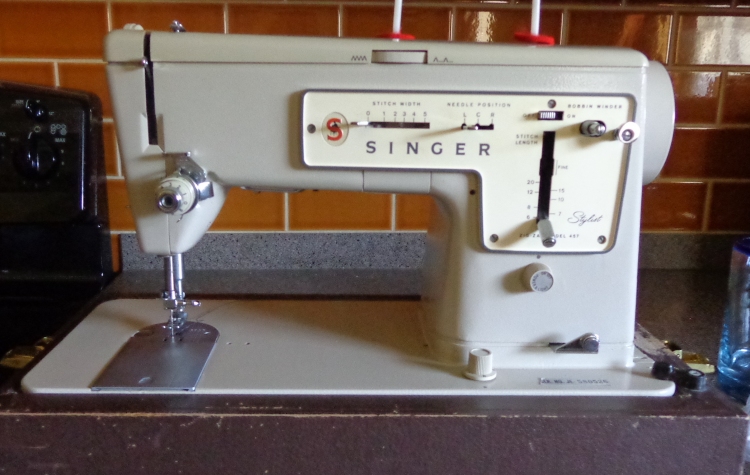
This one was quite clean, although I want to refinish its box. It was made in St. John’s, Quebec, in 1961. Here’s a bit on that plant, which opened in 1904 and was closed in 1986. The Stylist isn’t a machine with a fabulous reputation, because its gears are plastic, as you can see on this page on the Singer UK site. Since it was in good shape, though, and a zigzag machine, and just $10, home it came to join the herd. That button in front is to drop the feed dogs, which is cool, too.

Then, I found this Pfaff 360:
This picture is from its arrival here, and you can see that it was pretty dirty. I think someone was a smoker. It ran well, though, and is very clean inside, as if it was well maintained. I like that it has a similar free arm design to my old Elnas. The serial number indicates that it was built in 1959.
This one didn’t have all the goodies with it – in fact, it needed a new bobbin case – but it ran beautifully and was only $20 so it joined the herd, too. I have another Pfaff, a Pfaff 30, which is in a wooden cabinet. It’s a sturdy machine that sews a straight stitch.
I haven’t shown you the herd for a while, so here are (most of) the girls.
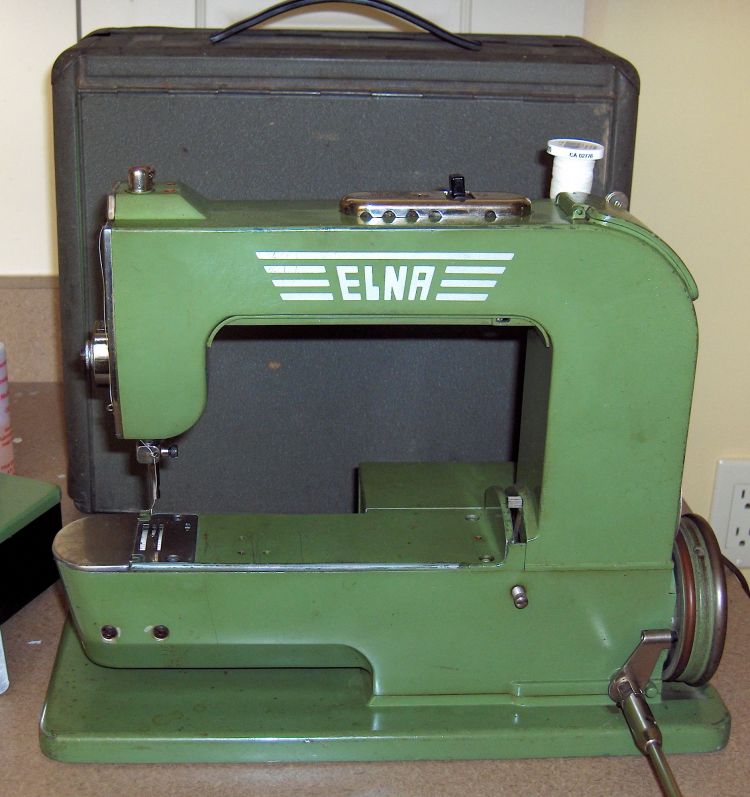
First, my Elnas. The first green one is called a Grasshopper. This was the first Elna design and was in production from 1940 to 1952. It was intended to compete with the Singer Featherweight and is a light little machine. That thing coming out the front right is a knee lever.

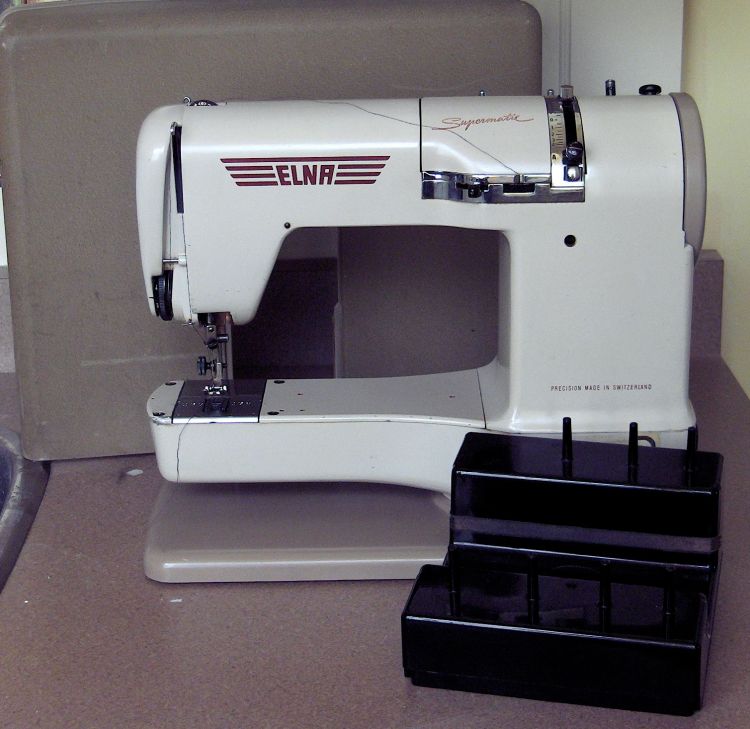
Next is a Supermatic from 1954 and then (the taupe one) another Supermatic from 1956. These two have little doors on the top, which are for cams for decorative stitches. They both have their original cases, which can be used to create a larger sewing surface – you can see how that cut-out fits around the free arm of the machine. The taupe one has the original Bakelite box for bobbins and accessories. It slides under the free arm when you pack it all away.
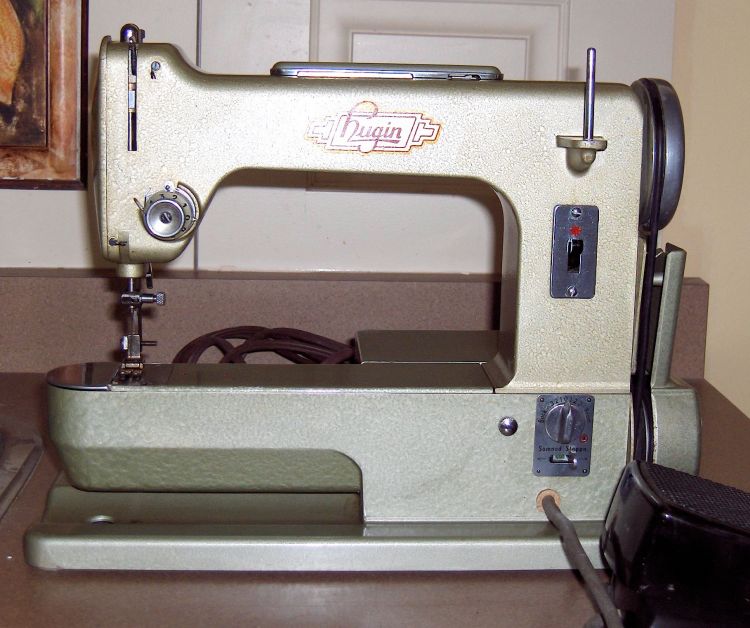
Then there’s a Hugin, which is a similar machine that was made in Sweden. This one sadly hasn’t done any sewing, because it needs a belt and I haven’t found one the right length yet. It’s also a straight stitch machine. I just like that it’s named after one of Odin’s ravens. (I blogged about it once before in this post.)
Next are the Singer machines: first a cute little 185K. (I don’t have a picture of my Featherweight – it’s just a plain black one.) My 185 was made in Scotland in 1958. That box in front is a buttonholer. I like that the box matches the machine so well.

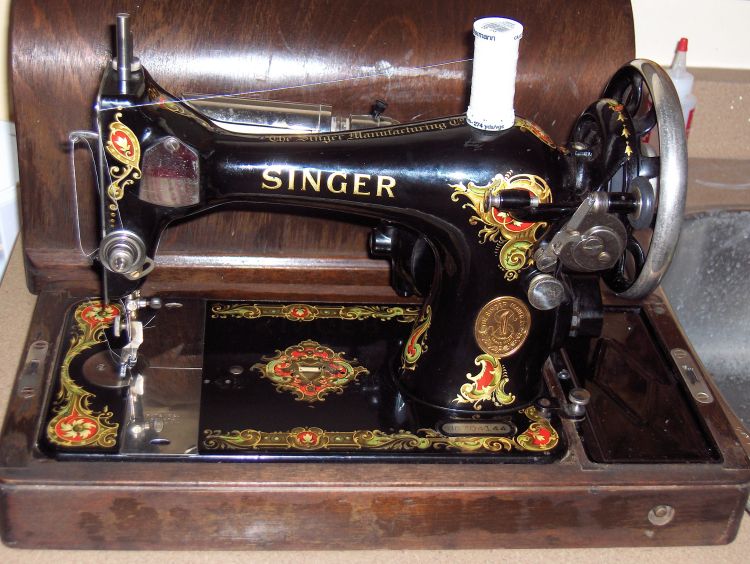

Then there are two old Singer machines. The first has a stencil design called Venezia, and some original wiring. (Hmm.) The second one is a handcrank with decals called Victoria. I think they’re just so pretty. They’re both Scottish lasses.
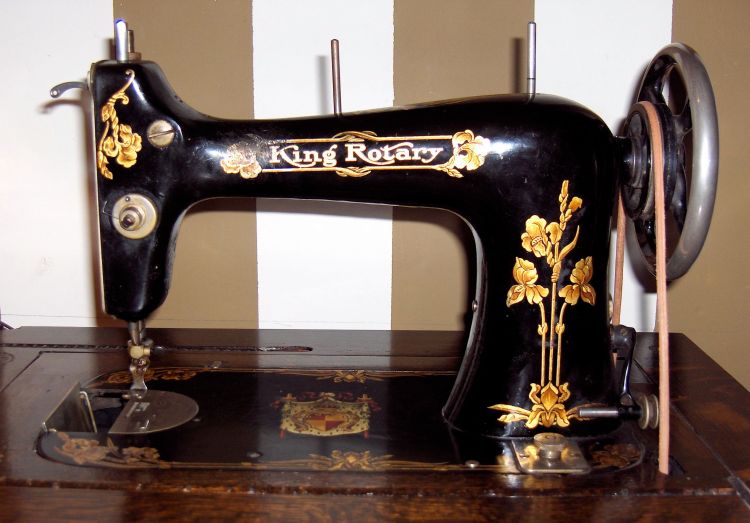
Finally, there’s the treadle machine in the cabinet. This is a King Rotary, which I haven’t been able to find out much about. It was likely made in Buffalo, New York – here’s a bit about the King sewing machine company and you can see that the heraldic emblem on mine is like the one on that website. Look at those lovely iris decals:
Do you collect anything vintage?

The one you just bought looks exactly like the one I inherited from my mom. Why she gave it to my I don’t know, I always hated sewing my own clothes. LOL Now I love to make mini quilts. about the size of a dessert plate. I am a complete mush ball when it comes to fabric. If I had the money I’d fill a whole room! I also had one of the push foot models as a child, I started out on that and it felt like I was doing the Indy 500 when I got my electric machine! I love to collect antique crocks and anything truly primitive from the colonial era. My husband collects the ceramic Christmas trees with the plastic lights. We have so many in every size from 3 foot down to 4 inches. They remind him of his grandmother.
LikeLike
Your miniquilts sound wonderful. And LOL on those ceramic Christmas trees. My mom took a course to make one. No idea what happened to it, but every time I see them for sale, I remember that. 🙂
LikeLike